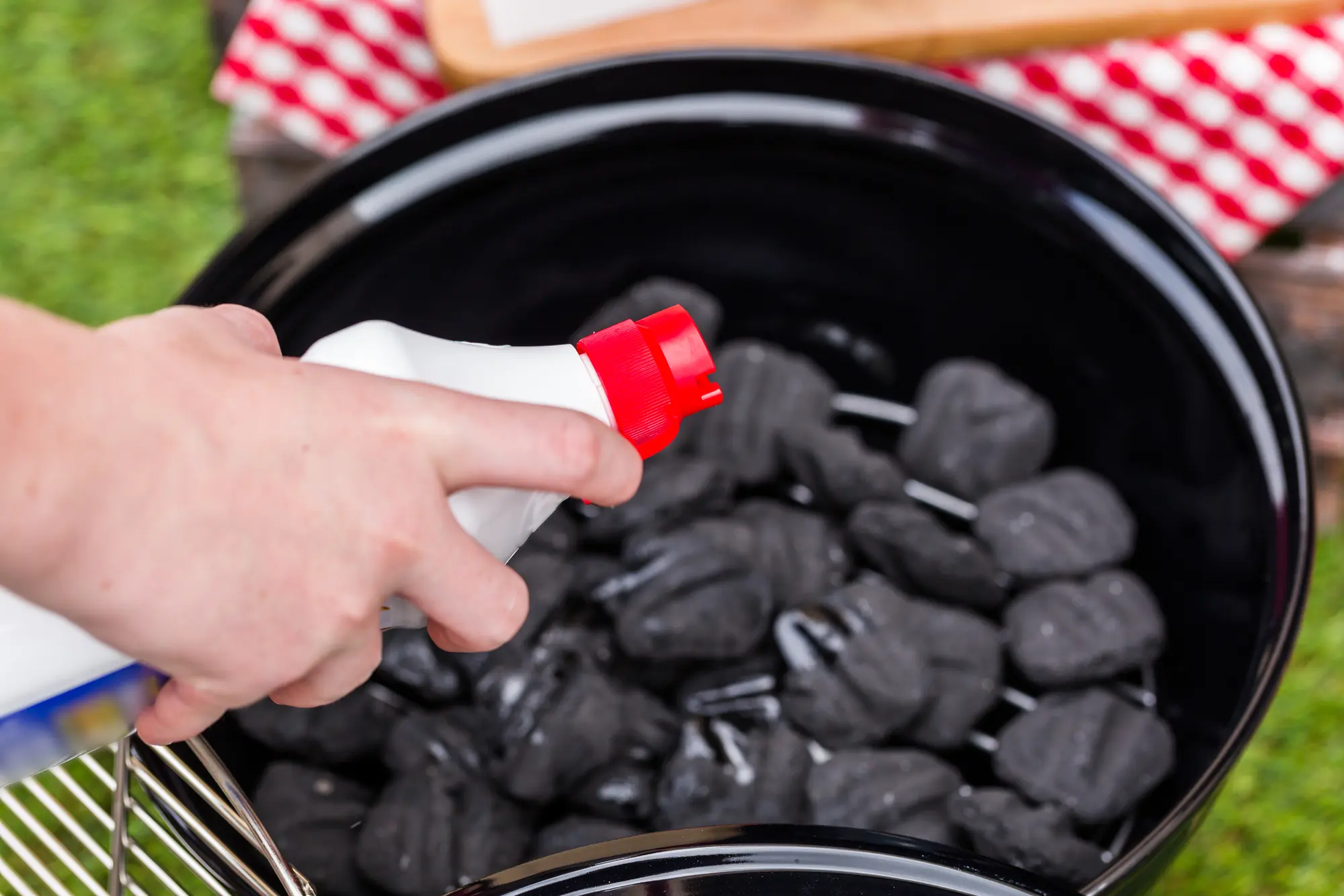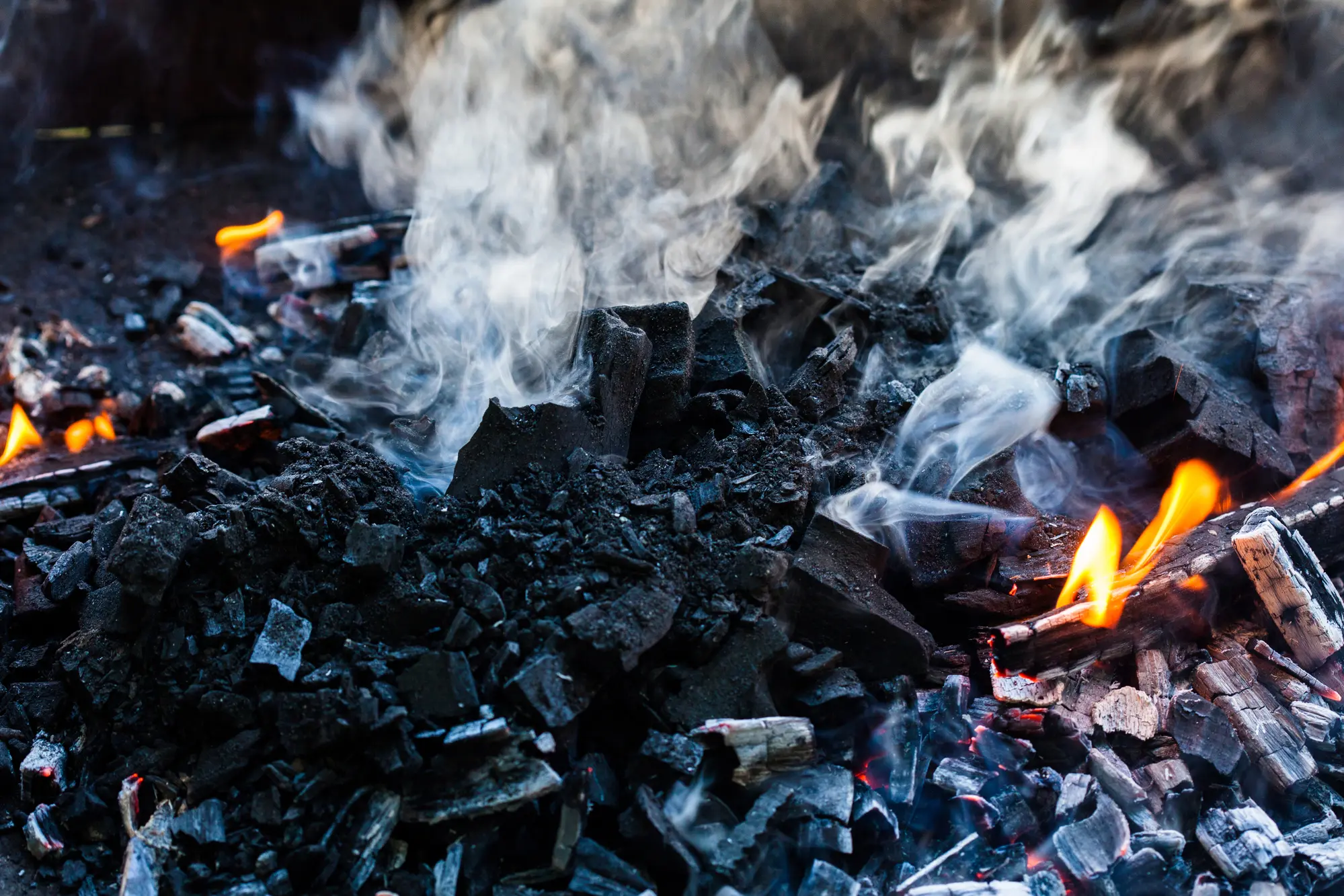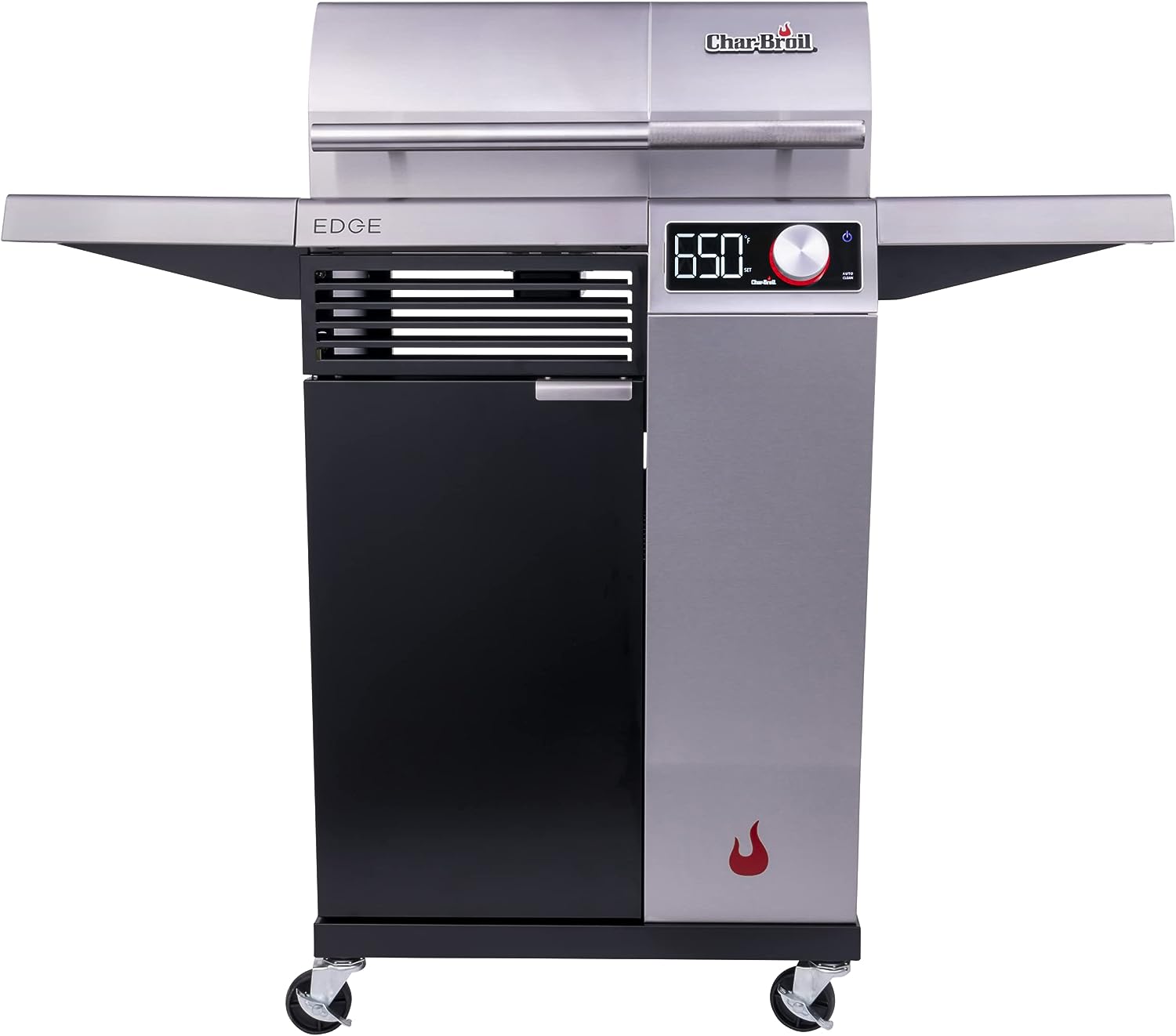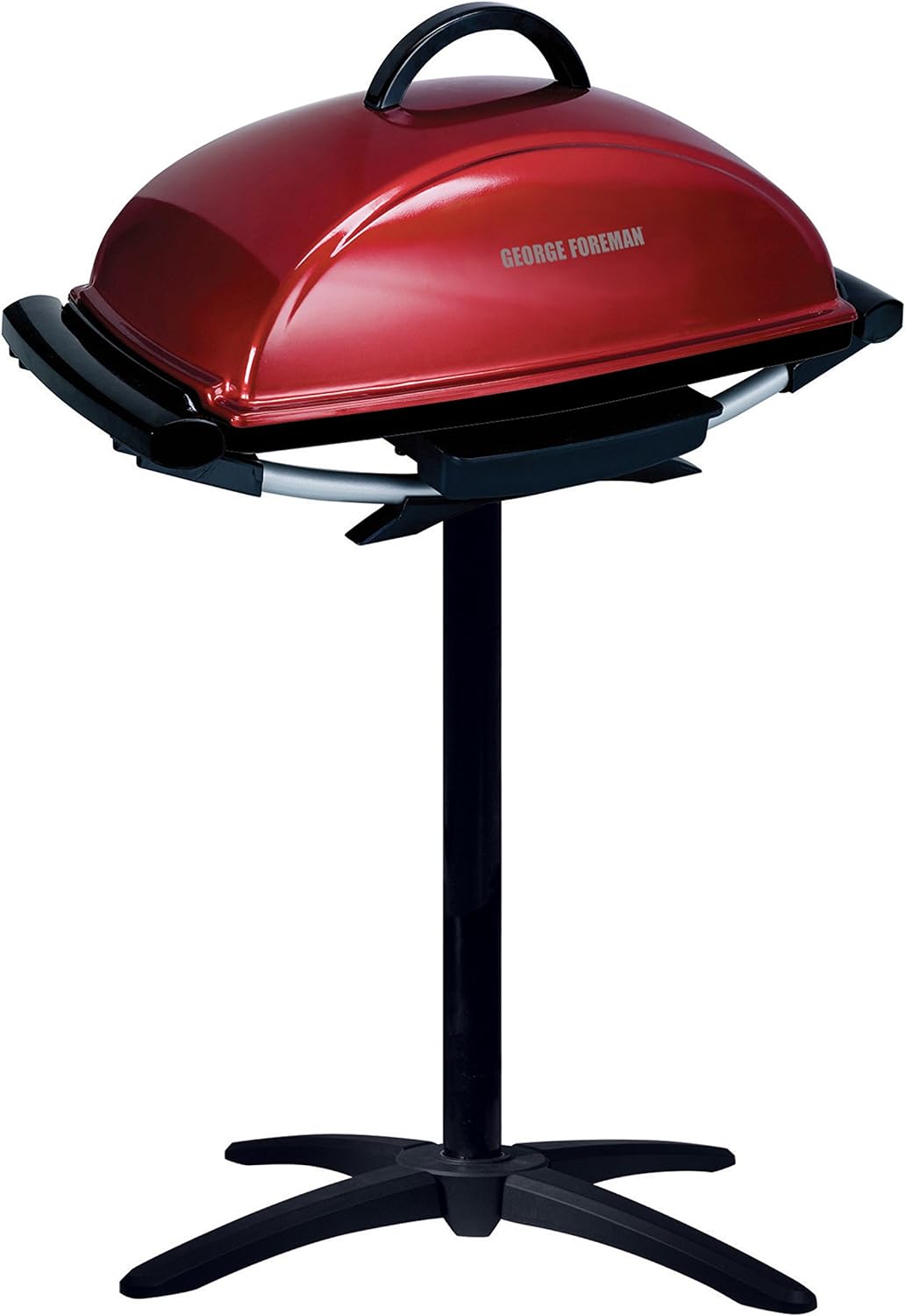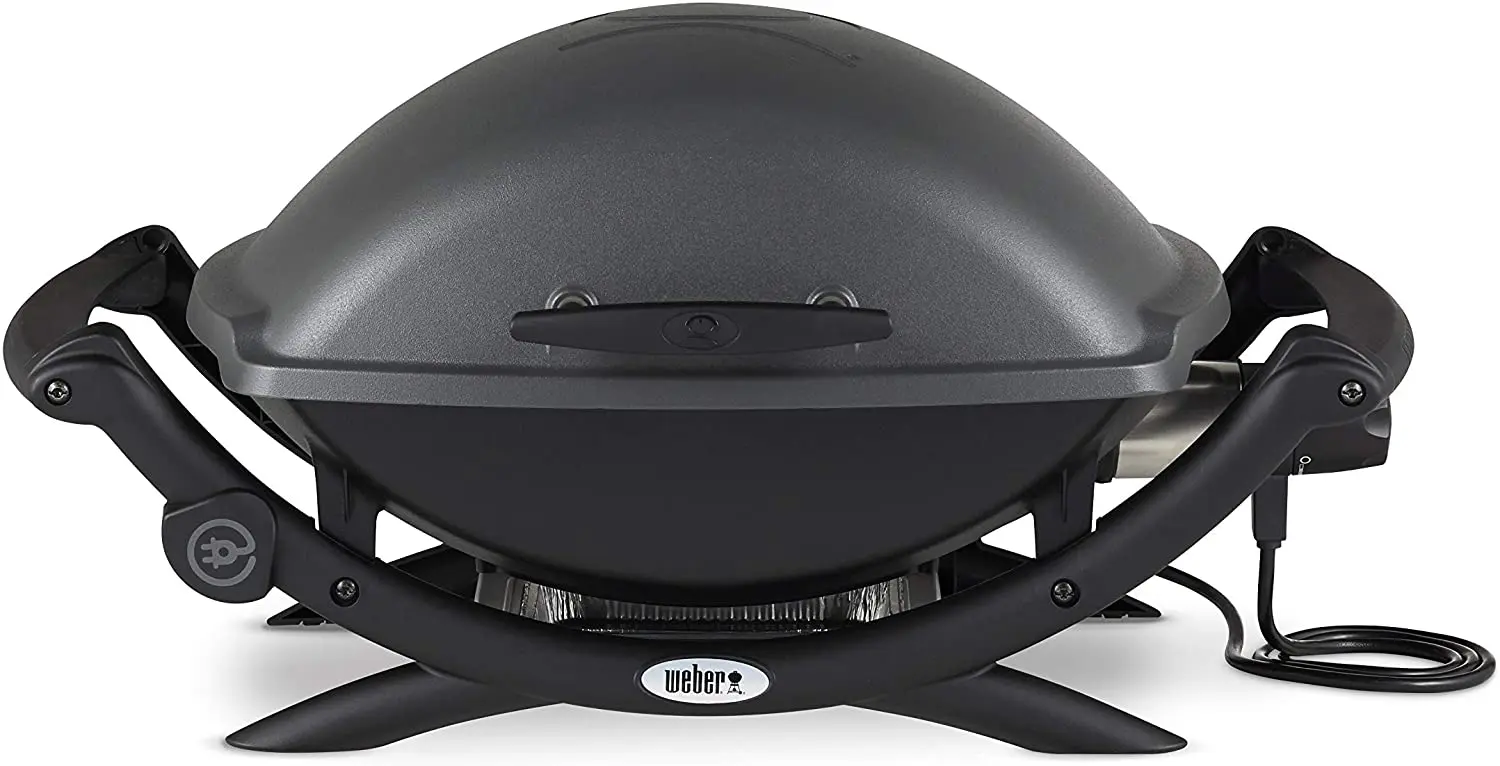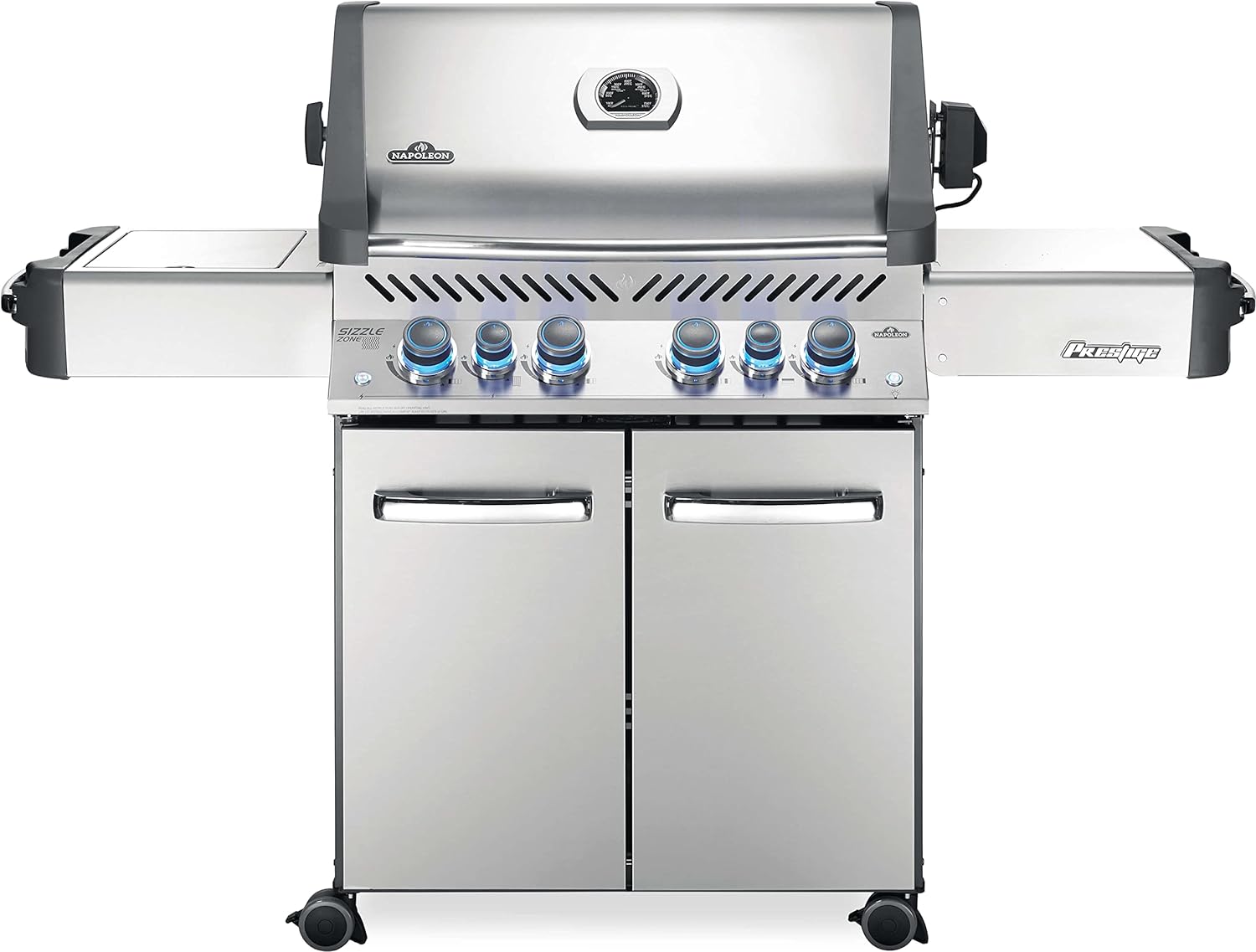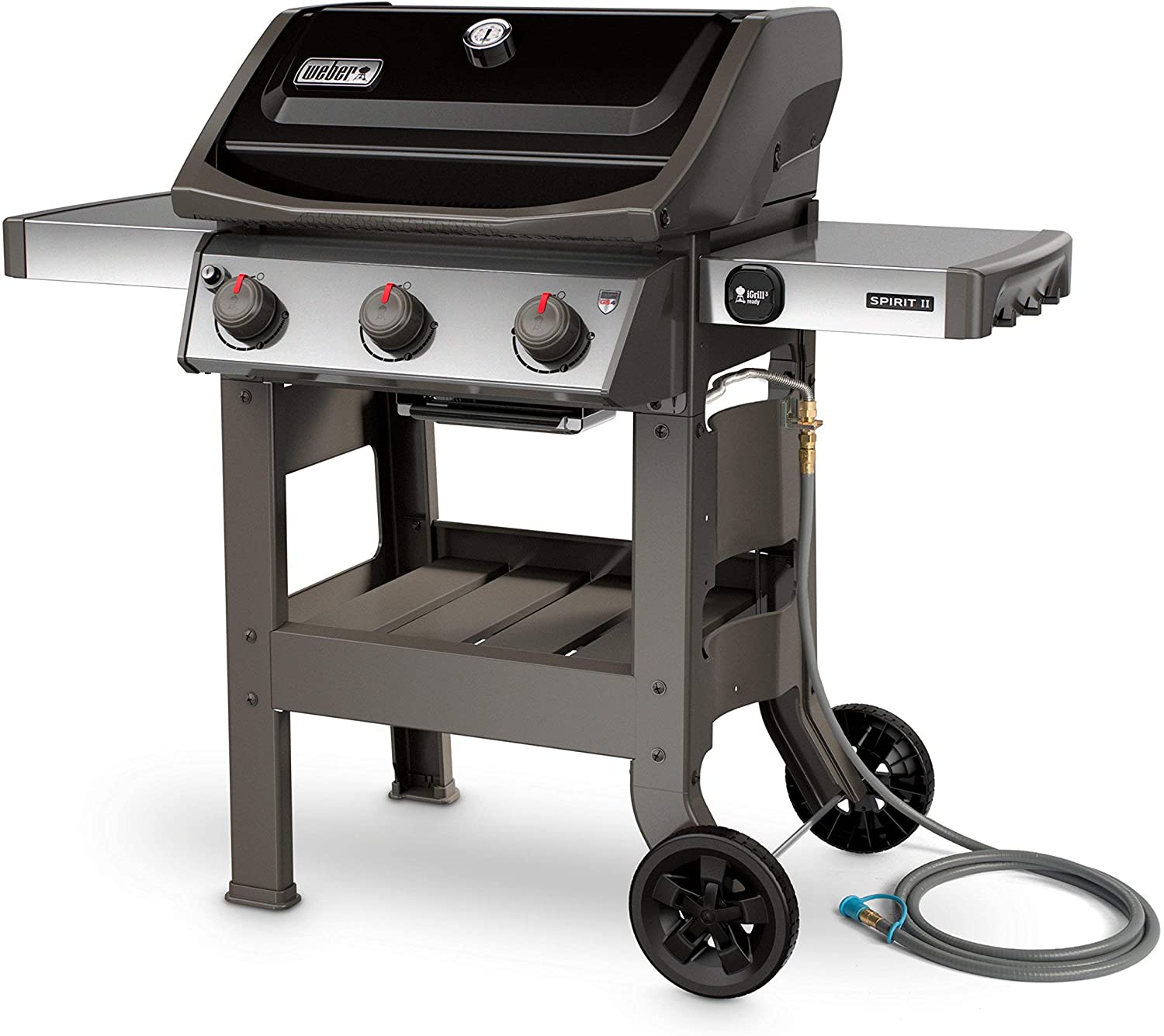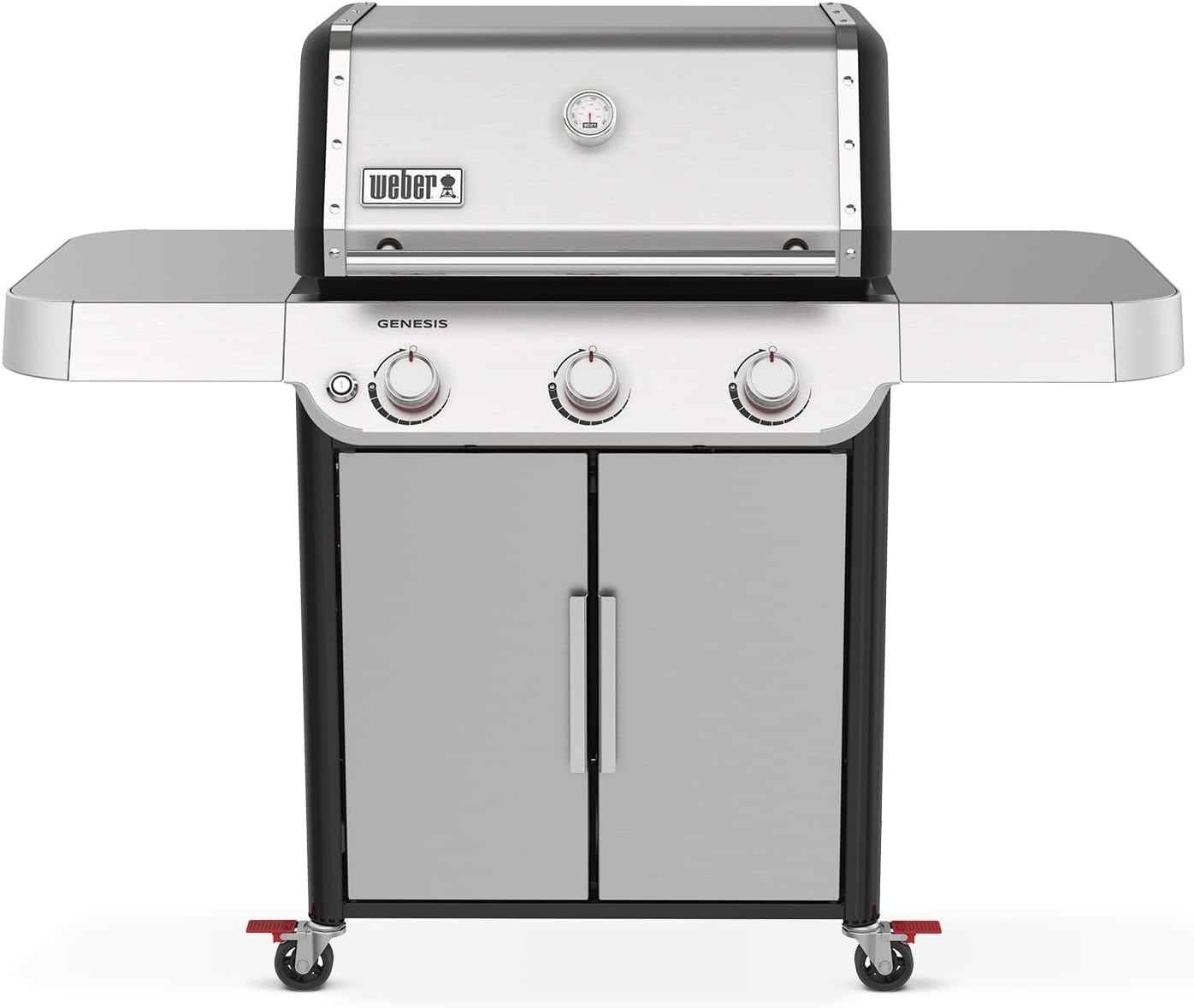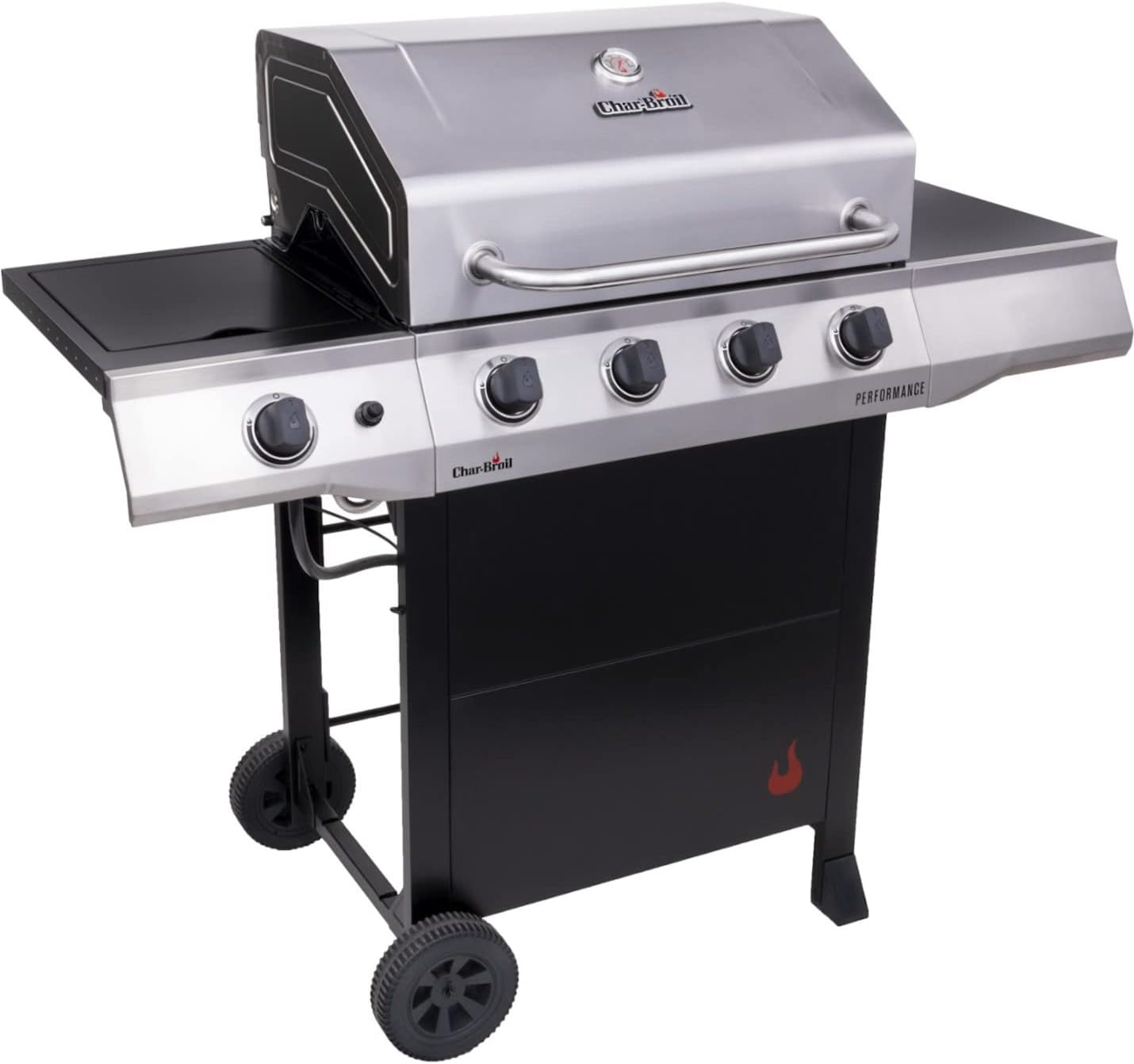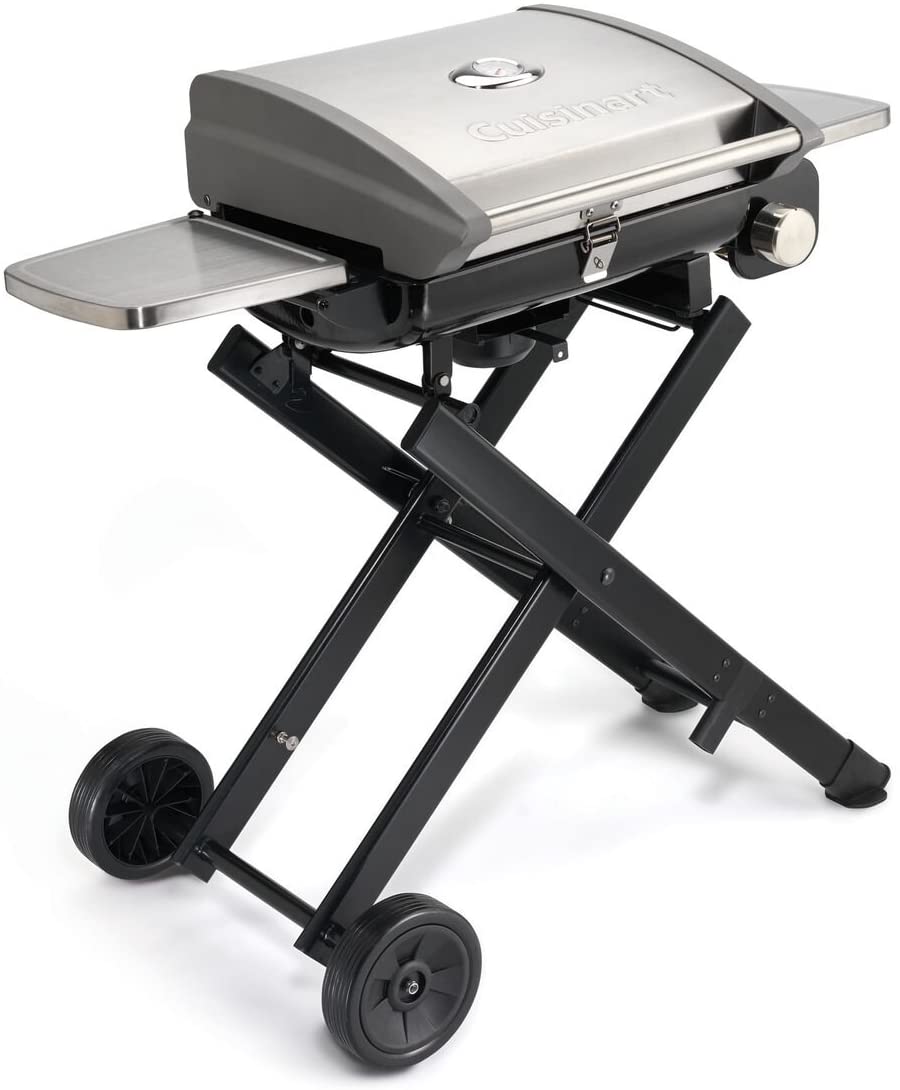By Catherine Poslusny
As the months get hotter and the days get longer, many people have one thing on their mind: grilling season. Good company, great food, and fun summer memories that can last a lifetime—what’s not to love? Well, maybe your cookout doesn’t align with your sustainability values. Sure, the environmental impact of a single cookout is tiny. But grilling can still release greenhouse gases into the atmosphere, and those emissions do add up over time. Let’s take a look into the most eco-friendly ways to get your grill on. Don’t let concern for the environment put a damper on your summer plans!
What is the carbon footprint of outdoor grilling?
The environmental impacts of outdoor grilling primarily depend on one factor: your fuel source. All grills smoke to some extent. That’s what gives grilled food its distinct—and delicious—flavor. (Even electric grills can produce smoke when bits of food or melted fat drop onto the electric element and burn.) However, the amount and composition of that smoke vary greatly between charcoal, gas, and electric grills.
Charcoal grills are by far the worst offender when it comes to environmental impact. The carbon footprint of one night of charcoal grilling is roughly equal to driving 26 miles in a gas-powered car. Aside from carbon emissions, smoke from charcoal grills can contain harmful pollutants that impact outdoor air quality, namely particulate matter and polycyclic aromatic hydrocarbons (PAHs) that may be harmful if inhaled.
Which type of grill is the most eco-friendly?
When calculating the carbon footprint of grilling, you have to look at the environmental impact of both the actual grilling process and the fuel production. For example, charcoal is made by burning cut wood in a kiln until the liquid evaporates and you’re left with an almost-pure carbon briquette.
This process is incredibly inefficient—over three-quarters of the heating value of harvested wood is lost when it’s turned into charcoal. Natural gas and propane, on the other hand, keep about 90% of their heating value as they travel from the ground to your grill.
Charcoal also loses when it comes to grilling, even without taking in the added carbon footprint of using fossil fuel accelerants to start the fire. (Chimney starters are the most eco-friendly way to start a charcoal fire.) Charcoal grills start producing smoke and burning through fuel long before they’re hot enough for grilling. Then, they continue smoking even after you’re finished cooking. Pellet Grills share this downside. They may use more sustainable sourcing for their pellet fuel, but will emit smoke and particulates during cooking.
While propane and natural gas grills use fossil fuels, their efficiency makes them the more eco-friendly choice than charcoal grills. Gas grills heat up quickly after you turn them on, and they can be turned off immediately after you’re finished cooking. Some gas grills offer efficient direct cooking – look for infrared rotisserie cooking or even in some cases infrared grilling!
Electric grills need to be plugged into your electricity to operate. Since they don’t use fossil fuels, it may seem like they’d be the automatic choice. Many green building advocates recommend that all homes go fully electric now to future proof as the grid receives more green energy and the price of gas rises. However, since over 60% of the electricity in the United States is powered by fossil fuels, electric grills may lead to more emissions than you realize. Understanding the mix of your electricity either via home or grid-source renewables will help you decide if gas or electric is better in the short term.
Which is Better – Propane Gas Grills vs. Natural Gas Grills
Propane gas and natural gas are both relatively clean energy sources. Propane emits slightly more carbon dioxide than natural gas, but natural gas has the nasty habit of leaking methane—a powerful greenhouse gas—into the atmosphere. Additionally, propane is more fuel-efficient than natural gas, so you use less each time you grill. On the other hand, it also tends to be more expensive. Ultimately, it’s up to you to decide which factors to prioritize when choosing a gas grill.
Some of the links below are affiliate links, meaning at no additional cost to you, we will earn a commission if you click through and make a purchase. Thank you for helping us continue to bring you great content.
Our Top Choices for Summer Grilling
Top 3 Electric Grills
Char Broil Edge Electric Grill
Materials: Stainless Steel, Anodized Aluminum grates
Dimensions: 48 x 22.5 x 45 inches
Cooking area: 330 square inches
Wattage: 1,750 watts
Take advantage of the greening of the grid with this beauty. The Char Broil Edge Electric offers the ease of digital control without sacrificing performance and style. Easy to start and the grill will keep the temperature steady for the duration of your grilling. This grill combines many of the best features of gas with all-electric simplicity, convenience, and eco-benefits.
What we like:
- Push to Start
- Digital Temperature Control
- Wide Temperature Range
- AutoClean
What we don’t like:
- Takes around 15 minutes to heat up
- Assembly required
George Foreman GFO201R Indoor/Outdoor Electric Grill
Materials: Metal
Dimensions: 22.25 x 10.43 x 12 inches
Cooking area: 200 square inches
Wattage: 1,500 watts
The George Foreman GFO201R Indoor/Outdoor Electric Grill is an easy-to-use electric grill with a nonstick surface and built-in drip pan. Though it’s classified as indoor/outdoor, the grill is easiest to use outside, where there’s plenty of space and any smoke from the grilling can dissipate. This grill heats up fast, and cleanup is as simple as quickly wiping down the metal grill pan.
What we like:
- Has a stand for a more traditional grilling experience
- Nonstick surface
- Makes great sear marks
- Easy to assemble and clean
What we don’t like:
- Stand can be wobbly
- No smoky flavor
Weber Q 2400 Electric Grill
Materials: Aluminum
Dimensions: 14.5 x 31.5 x 19.5 inches
Cooking area: 280 square inches
Wattage: 1,560 watts
The Weber Q 2400 is a portable electric grill that’s easy to plug in and start cooking. While this grill doesn’t come with a stand, one can be purchased separately. It’s perfect for apartment-dwellers that need to cook on a balcony or patio, and its larger grilling area makes it a great option for those that love to host.
What we like:
- Simple to set up and use
- Big enough to grill food for a party
- Porcelain-enameled, cast iron cooking grates are easy to clean
- Portable countertop unit
What we don’t like:
- Takes around 20 minutes to heat up
- Food occasionally sticks to grates
Top 3 Natural Gas Grills
Napoleon Prestige 500 Natural Gas Grill
Materials: Stainless steel
Dimensions: 26.5 x 66.25 x 50.25 inches
Cooking area: 500 square inches + 260 square-inch warming rack and 140 square-inch side burner
Number of Burners: 4 + 2 infrared burners
BTUs: 48,000
If you’re looking to splurge, the Napoleon Prestige 500 has all the bells and whistles you could want on a grill. This powerful grill heats up quickly and has plenty of space to cookout for the entire neighborhood. Plus, the infrared Sizzle Zone side burner heats up to 1800 degrees in 30 seconds, perfect for searing steaks.
What we like:
- Durable, made of quality materials
- Easy ignition and even heat distribution
- SafetyGlow control knobs light up when you’re grilling at night
- Rotisserie burner and kit included
- Also available in propane
What we don’t like:
- Assembly can be difficult
- Wheels make it challenging to move the grill
Dyna-Glo Premier 2-Burner Natural Gas Grill
Materials: Stainless steel
Dimensions: 50.2 x 23.23 x 45.28 inches
Cooking area: 445 square inches
Number of Burners: 2
BTUs: 24,000
The Dyna-Glo Premier 2-Burner Natural Gas Grill is the perfect compact option for smaller backyards. But don’t let its small package fool you. This affordable grill can be counted on for consistent performance with every use.
What we like:
- Great quality on a budget
- Grates are easy to clean
- 10-foot gas hose included with purchase
- Quick-start ignition and even heat distribution
- Also available in propane
What we don’t like:
- Small surface area makes it difficult to cook for more than a few people
- Doesn’t get as hot as the other grills on this list
Weber Spirit II E-310
Materials: Porcelain-enameled, cast iron cooking grates
Dimensions: 27 x 52 x 44.5 inches
Cooking area: 529 square inches
Number of Burners: 3
BTUs: 30,000
The Weber Spirit II E-310 is the best of both worlds—serious grilling power at an affordable price. This model comes from one of the most trusted names in grilling, and it delivers the same even heating power every time. With its large grilling surface and warming rack, the only limit to your cookouts is your imagination.
What we like:
- Lots of cooking space in a small package
- Heats up quickly and holds heat well
- Built-in grease management system
- Affordable
- Also available in propane
What we don’t like:
- Requires assembly
- Hood isn’t as deep as other models
Top 3 Propane Gas Grills
Weber Genesis II EX-315 Propane Gas Smart Grill
Materials: Porcelain-coated cast iron, stainless steel
Dimensions: 52 x 27 x 44.5 inches
Cooking area: 669 square inches
Number of Burners: 3
BTUs: 39,000
The Weber Genesis II Propane Grill is a high-performance grill with an upgraded smart tech package. The app lets you select desired doneness and sends you alerts as it counts down to readiness. The burners have a unique, tapered shape to deliver a consistent gas flow from front to back. Add the porcelain-enameled cast iron grates and you get consistent heat distribution for even grilling across the cooking surface.
What we like:
- Grill temperature and probe temperature monitoring and alerts.
- Grates are easy to clean
- Made with high-quality materials
- Plenty of space to store your grilling tools
- Also available in natural gas
What we don’t like:
- Pricey
- Side tables do not fold down
Char-Broil Performance Four-Burner Grill
Materials: Stainless steel
Dimensions: 50.4 x 24.5 x 45 inches
Cooking area: 425 square inches
Number of Burners: 4
BTUs: 36,000
The Char-Broil Performance Four-Burner Grill is a great budget grill. This model can reach high temperatures quickly with its four burners, and the large cooking space makes it easy to whip up meals for a crowd on the porcelain-coated cast iron grate. Plus, the side burner and warming rack allow you to grill burgers, toast buns, and sauté veggies at the same time.
What we like:
- 10,000-BTU side burner with lid
- Easy to clean
- Lid-mounted thermometer
- Two prep tables and large cooking area
What we don’t like:
- Assembly required
- Less durable than more expensive grills
Cuisinart CGG-240 All Foods Roll Away Grill
Materials: Stainless steel
Dimensions: 41 x 23 x 36 inches when fully open
Cooking area: 240 square inches
Number of Burners: 1
BTUs: 15,000
The Cuisinart CGG-240 All Foods Roll Away Grill was made for the adventurer. If your grilling habits aren’t confined to your backyard, this ultra-portable propane grill may be what you’re looking for. This collapsible grill doesn’t have the largest cooking area, but it boasts even heat distribution, two food-prep side tables, and easy cleanup.
What we like:
- Compact—only 44 x 23 x 21 inches when folded
- 2 slide-out side shelves
- Heat distribution panel for even cooking
- Built-in stand means you can grill anywhere
What we don’t like:
- At 45 pounds, it may be difficult to lift for some
- Not great for cooking for more than a few people
Bonus: Luxury Infrared Natural Gas or Propane Grill
Lynx L36ATR-NG Trident Built-In Professional Grill
Materials: Stainless steel
Dimensions: 36 x 25.38 x 24.75 inches
Cooking area: 935 square inches, primary and secondary
Number of Burners: 3 Trident infrared burners
BTUs: 46,000
If you are not on a budget, it is hard to beat the Lynx Trident Grills. Their innovative system uses infrared radiant heat to cook the food directly instead of relying on heating the air inside the hood. Ceramic burners won’t rust or corrode, offer even heat distribution, and cook quickly. A common complaint on lesser infrared grills is that they are only suitable for searing. Trident burners offer a wide range of options from delicate grilling to searing. Importantly, infrared grills burn less gas, making them the more eco-friendly choice. Also available in 30 inch and 42 inch models, or as an option to add to one of their other gas models. All grill masters will find what they are looking for.
What we like:
- Energy efficient infrared
- Great temperature range and control
- Halogen grill surface lights
- LED lighted control knobs
- Durable, made of quality materials
- Rotisserie burner, three-speed motor, rods, and meat forks
- Available in natural gas or propane
What we don’t like:
- Must be built in or purchased with a base
- Professional install highly recommended
- Pricey
Final Thoughts on Green Grilling
This summer, you don’t have to choose between reducing your carbon footprint and enjoying a cookout with your friends. Just remember, it’s all about choosing an eco-friendly fuel source. Now get out there and grill your heart out!
The author:
Catherine Poslusny is a freelance writer and content marketing specialist based out of Norman, OK. You can find her at catherinerosewrites.com.
Our team researches products, companies, studies, and techniques to bring the best of green building to you. Elemental Green does not independently verify the accuracy of all claims regarding featured products, manufacturers, or linked articles. Additionally, product and brand mentions on Elemental Green do not imply endorsement or sponsorship unless specified otherwise.



